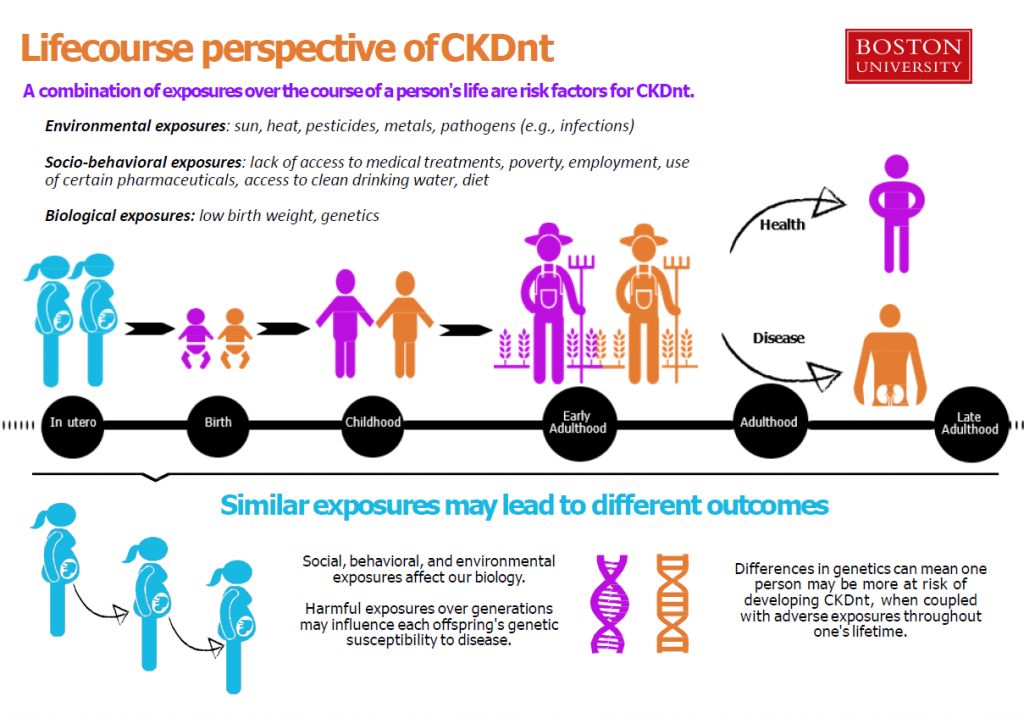Our Research
The consensus among researchers is that CKDnt is most likely caused by a combination of factors. For this reason, our research program includes multiple studies designed to investigate the role of occupational and non-occupational exposures experienced along the lifecourse. As such we divide them into three categories: Early Life Exposures, Occupational Studies, and Genetic Susceptibility.
Factors such as low birthweight, genetics, diet, medication, and environmental exposure to toxicants or infectious agents may play a role in causing damage to the kidneys in childhood and adolescence. Once individuals are old enough to join the workforce, occupational exposures likely play an important role in disease onset either directly or as modifiers of other risk factors. There may also be important differences in genetic susceptibility that would interact with environmental and occupational exposures to further increase the risk of disease. The common goal of our work is to identify the cause(s) of the epidemic to inform interventions and policy changes to minimize risk of chronic kidney disease (CKD).
We have recently been awarded participation in the National Institutes of Health (NIH) Consortium for the study of CKDnt, Chronic Kidney Diseases of UnceRtain Etiology (CKDnt) in Agricultural Communities (CURE) Research Consortium. The CURE consortium will also consider the role of exposure across the lifespan.
Image Description: Lifecourse perspective of CKDnt. A combination of exposures over the course of a person’s life are risk factors for CKDnt. These could include involuntary environmental exposures, socio-behavioral exposures, and biological susceptibility. Examples of environmental exposures include sun, heat, pesticides, metals, and pathogens (e.g., infections). Examples of socio-behavioral exposures include lack of access to medical treatments, poverty, employment, use of certain pharmaceuticals, access to clean drinking water and diet. Biological susceptibility could include being born at low birth weight and genetics. Harmful exposures over generations may influence each offspring’s genetic susceptibility to disease. Differences in genetics can mean one person may be more at risk of developing CKDnt, when coupled with adverse exposures throughout one’s lifetime. The image includes a diagram with human figure drawings to represent the life-course of two humans, from in-utero to adulthood, in which one develops CKDnt and one does not. From left to right, the drawing depicts two people in-utero, who are born and move from infancy into adulthood. The image represents how people may be chosen for a study, and exposures throughout their lifetime may help researchers understand CKDnt development outcomes.
